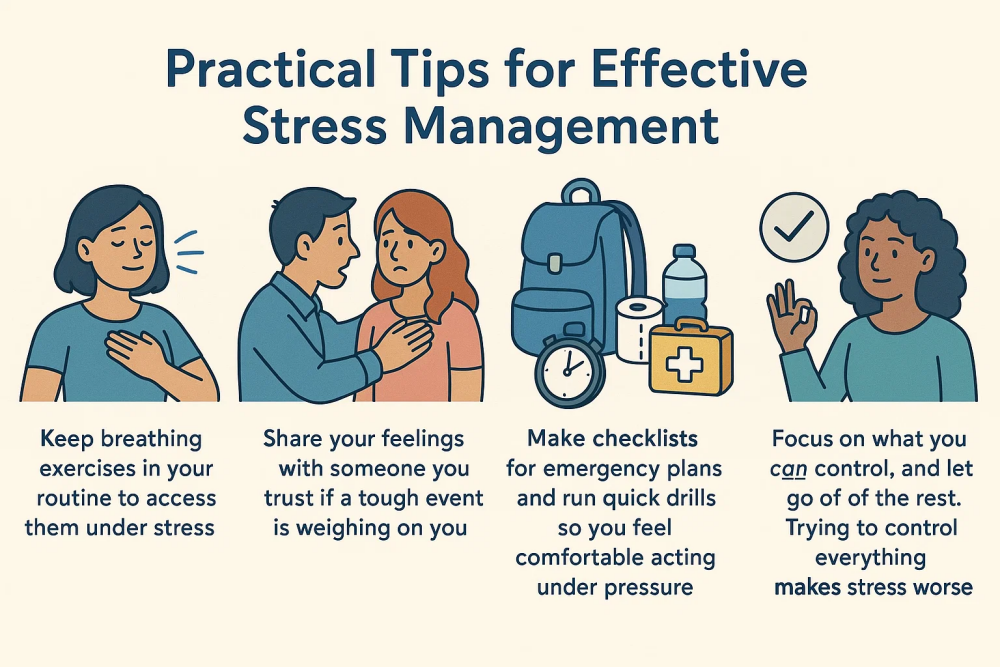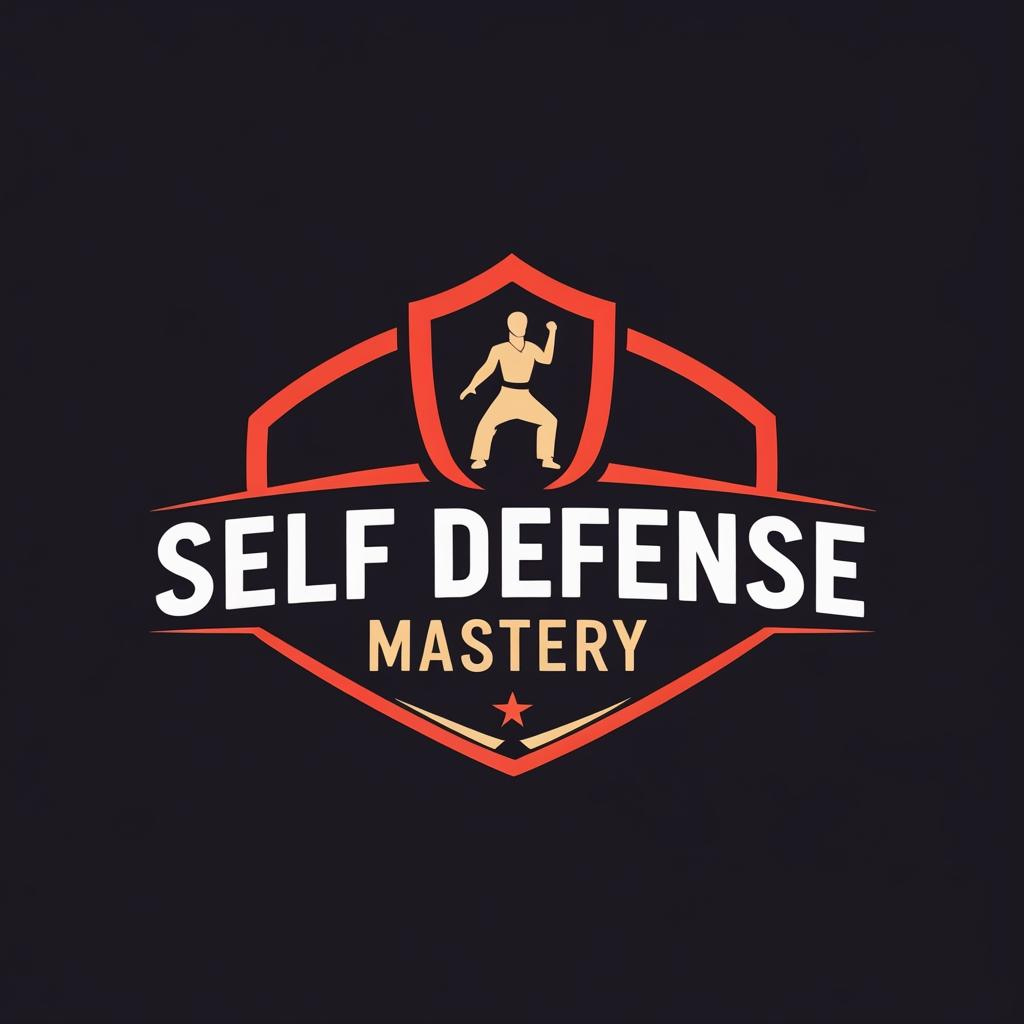Stress can show up quickly when I’m in a high-risk situation. Handling stress in emergencies is not only about keeping calm, but also about making clear choices to protect my well-being. Some of the most challenging moments in life demand quick reactions, steady nerves, and the ability to manage stress effectively. By staying honest about my stress response and learning practical techniques, I build skills to deal with stress, even under pressure. Here, I’ll share what has helped me and what I’ve learned so you can strengthen your stress management for high-pressure situations.
- Recognizing Stress in High-Risk Situations
- How I Prepare For High-Pressure Scenarios
- Stress Relief Techniques for the Moment
- Troubles That Make Stress Worse
- Ways to Build Emotional Resilience
- Examples Where These Skills Make a Difference
- Frequently Asked Questions
- Practical Tips for Effective Stress Management

Recognizing Stress in High-Risk Situations
Understanding how stress manifests in critical moments is crucial for stress management. High-risk situations can include emergencies, fast-paced work decisions, medical events, or dangerous weather. These moments can trigger a rush of adrenaline, which I’ve noticed in my own body as a racing heart, sweaty hands, and quickly changing thoughts.
My body and mind respond in real time to threats or pressure. Stress in emergencies can affect my memory, thinking, and decision-making. Knowing the most common signs of stress response helps me spot how I’m coping, giving me a better shot at using good coping mechanisms.
- Physical signs: Fast heartbeat, tense muscles, shallow breathing, or stomach pain.
- Emotional signs: Fear, anger, sadness, or feeling overwhelmed.
- Mental signs: Trouble focusing, forgetfulness, negative thoughts, or loss.
- Behavioral signs: Pacing, snapping at others, shutting down, or making rash choices.
Spotting these changes early helps me use effective stress management techniques before I feel worse. Prevention is easier than recovering from burnout or panic.
How I Prepare For High-Pressure Scenarios
Preparation helps me manage stress before it becomes overwhelming. Planning, practicing routines, and having clear goals have made a real difference. I rely on some key steps when I know I’m heading into a high-risk situation:
- Know My Triggers: I pay close attention to what makes me anxious or tense so I have strategies ready.
- Skill Drills: Practicing first aid, fire drills, or tough conversations beforehand makes me feel less nervous when the real thing arrives.
- Checklists: Lists keep me grounded. Before a big challenge, I write down what to do and what to bring, which lowers my chance of forgetting something important.
- Breathing Practice: I regularly practice slow, steady breathing techniques to calm myself, even in noisy or chaotic spaces.
Having trusted tools and simple routines helps me create a safe mental space during high-pressure moments. One thing that’s helped me a lot has been reaching out to people who’ve faced similar situations and asking what helped them. Sometimes, just hearing stories from others makes me realize I have more power over my stress than I thought.
Stress Relief Techniques for the Moment
When I’m in the middle of a critical situation, managing stress is all about what I do “right now.” I use several quick and proven ways to ease my nerves and take charge of my stress response. Here are the methods I rely on most:
- Box Breathing: I inhale slowly for four counts, hold for four, exhale for four, and hold again for four. I repeat this pattern to slow my heart and steady my thoughts.
- Grounding Exercises: Picking out and naming five things I see, four things I feel, three things I hear, two things I smell, and one thing I taste helps bring me back into the moment and out of panic.
- Physical Release: When I can, taking thirty seconds to stretch, squeeze a stress ball, or walk quickly helps burn off nervous energy.
- Clear Communication: Speaking slowly, asking for help, or stating what I need out loud keeps panic at bay and helps others understand my state.
These stress relief techniques work best when I practice them often, not just in emergencies. Coping with stress is a skill I keep building every day. Over time, these methods have let me stay more present and make smarter emergency choices.

Troubles That Make Stress Worse
Some things make managing stress in high-risk situations even tougher. For me, these common hurdles have sometimes made it hard to keep my cool:
- Lack of Sleep: My patience drops, and my reactions slow down when I’m tired.
- Poor Communication: Missed signals or unclear directions can cause confusion and stress.
- No Support Network: Trying to face significant challenges alone feels heavier and makes stress harder to control.
- Uncontrolled Environment: Too much noise or chaos overloads my senses. It makes focusing on stress management tricky.
Knowing these triggers helps me focus on effective stress reduction strategies. I try to sleep well before known challenges and keep in contact with trusted people. When possible, I seek out quieter places to sort through decisions calmly. I also remind myself that getting help isn’t a weakness but a way to problem-solve together, which chips away at feeling alone or overwhelmed.
How Lack of Sleep Impacts My Stress Response
I notice that even one night of poor sleep makes me more tense. Sleep is when my mind and body recharge. Good sleep helps me tackle stress in emergencies with a clearer head, better judgment, and more patience. Missing rest makes everything feel bigger and harder. In my experience, building a consistent bedtime routine and limiting screens before sleep do help.
Building a Support Network
I’ve learned that talking things through with a friend, family member, or coworker helps me manage stress before it gets too much. When I know someone has my back, high-risk stress management feels more doable. This also makes it easier to debrief after tough situations, which speeds up emotional recovery. If I don’t have someone close by, sometimes reaching out through online support groups or hotlines can still help a lot.
Ways to Build Emotional Resilience
Dealing with stress over time is about building emotional resilience. Resilience is my “bounce back” power after difficult events or high-pressure scenarios. Some ways I make my resilience include:
- Positive SelfTalk: I remind myself I’ve handled hard stuff before, even if I felt shaky at the time.
- Mindfulness Practice: Taking even five minutes to focus on the present moment, without judgment, brings my mind back to center.
- Learning After Facing Stress: Reflecting on what went well and what didn’t, without blaming myself, keeps me growing and ready for the next challenge.
- Healthy Habits: Eating well, regular exercise, and staying hydrated all play big roles in stress reduction strategies that work.
These steps don’t make challenging moments disappear, but give me a stable foundation. Building habits for coping with stress takes patience, but it pays off in more control during tough times. Sometimes, I even keep a simple journal or note on my phone about what I did well, so I know where to start next time.
Examples Where These Skills Make a Difference
I’ve seen how real stress management makes a difference when it matters most. Here are a few scenarios where managing stress has impacted my life and the lives of those around me:
- Medical Emergencies: Using calm breathing, I’ve been able to keep my head clear to call for help and follow instructions when a family member fainted.
- Workplace Crisis: When a technical problem occurred, I used a checklist to respond methodically instead of panicking or blaming others. This helped resolve the issue faster.
- Natural Disasters: Keeping a go bag ready and practicing evacuation routes with my family lowered our anxiety during severe storms, making it easier to follow emergency plans together.
Each time, combining stress coping mechanisms and stress reduction strategies helped me act quickly and recover more confidently from the event. In some moments, these skills helped me and those around me who were feeling the pressure of the situation.
Frequently Asked Questions
Based on what I’ve wondered and been asked by others, here are some common questions about managing stress in high-risk situations.
Watch for warning signs like feeling frozen, losing focus, snapping at others, or having trouble breathing. Noticing these signs early helps you take action using stress relief techniques, like deep breathing or asking someone for support.
Breath control is often the quickest way. Try box breathing, or count your breaths slowly. Even sixty seconds can make a big difference in your physical stress response.
Yes, good sleep, regular movement, daily connection with people you trust, and mental rehearsal of challenging situations help you bounce back faster. Building emotional resilience matters as much as learning first aid or practical skills.
Practical Tips for Effective Stress Management
My favorite tips for managing stress in challenging situations are simple and easy to remember:
- Keep breathing exercises in your routine to access them under stress.
- Share your feelings with someone you trust if a tough event is weighing on you.
- Prepare your environment as best as possible, packing needed supplies in advance.
- Make checklists for emergency plans and run quick drills so you feel comfortable acting under pressure.
- Focus on what you can control, and let go of the rest. Trying to control everything makes stress worse.
These practical methods make real life in high-risk situations easier to handle. Good habits and clear plans don’t remove pressure, but they give me ways to handle it better. Tackling each stressful event gives me a new lesson to use the next time I face anything similar.

Everyone handles stress differently. The ideas here come from my own experience and what I’ve learned talking to friends and medical staff and reading trusted resources such as the American Psychological Association (apa.org/topics/stress).






![What To Say And Not Say To Police After A Self-Defense Incident [2025 Guide] What to Say and Not Say to Police After a Self-Defense Incident](https://selfdefensemastery.com/wp-content/uploads/2025/04/police-scene-dusk-crime-tape-guide.jpg)
